Zambia
Zambia, in long form the Republic of Zambia, in English Zambia and Republic of Zambia, is a country of southern Africa, without access to the sea. Formerly Northern Rhodesia, until its independence, it was an integral part of the Commonwealth. Its population is estimated at sixteen million inhabitants in 2017. Democratic Republic, its capital is Lusaka. Its name comes from the Zambezi river. Canoes remain a convenient means of transportation in rural areas and in the rainy season; here in 2006, in the Bangweulu marshes in the dry season (Zambia). The “Great Eastern Route” (here in Lusaka), which connects the eastern province with the rest of the country, Malawi and northern Mozambique. Initially populated by the Bushmen, a hunter-gatherer people, the Zambian territory was taken over by the Bantus in the 4th century AD. Mainly covered by the savannah, the country still shelters a rich biodiversity, with fauna and flora typical of varied landscapes and environments, while being the theater of an increasing urbanization and peri-urbanization, as well as an increase of cultivated surfaces. Colonial borders result in a wide variety of cultural groups, which are partially recognized by the state through the formalization of kings and local leaders. A colonial heritage, English is the official language and must also promote the unity of the nation.
Zambia’s history
Ancient history
Zambia is rich in prehistoric remains, such as the skull of homo rhodesiensis, which is between 100,000 and 300,000 years old, discovered in 1921 at Broken Hill, in a zinc mine in the city of Kabwe, by the Swiss Tom Zwiglaar . The first inhabitants of Zambia were Bushmen living from hunting and gathering. From the fourth century onwards, many Bantu-speaking peoples settled and formed chiefdoms, a sort of autonomous principality; they are distinguished from the first inhabitants by their mastery of agriculture, they also have the art of making pottery and weapons. Private property is not known and the land is still cultivated collectively. A metallugirque activity of transformation of the copper ore begins as of the 5th century, in the north of the current territory of Zambia.
Pre-colonial history
Populations bartered until the ninth century, when certain ethnic groups adopted copper crucibles of different weights as currency. For several centuries the country saw the development of other activities, cotton cultivation and copper mining in particular. From the sixteenth century, the country split into multiple kingdoms under the influence of the Bembas and the Lozis. Linked to Arab slavers, the Bembas founded an empire over an area from the present Congo to Lake Tanganyika. They participate in the slave trade, mainly for the benefit of the Zanzibar sultans. Between 1838 and 1864, a temporary Kololo protectorate was established over the Lozi (related to the Sothos). The first non-Africans to enter the country were the Portuguese in the 18th century, followed by Arab traders. In 1798, the Portuguese explorer Francisco José de Lacerda e Almeida led the first scientific expedition led by Europeans to Africa. The aim of the Lacerda e Almeida expedition is to link the two Portuguese territories in the region, Mozambique to the east, and Angola to the west. Traveling more than 1,300 kilometers from Tete, it reaches Kazembe, then part of the Lunda kingdom, where it succumbs to fevers in October 1798. The expedition, now under the command of Father Francisco João Pinto, returns to Tete without trying to continue to Angola. The explorer’s expedition log is saved and brought back to Tete. It is translated into English by Richard Francis Burton and published in a book called The Lands of Cazembe: Lacerda´s journey to Cazembe in 1798. For half a century, this document constitutes the only European testimony concerning this region, until voyages of Scottish explorer David Livingstone from 1851.
Colonial period
British guardianship was imposed on Barotseland, first through the British South Africa Company (BASC) and then in 1924 through the protectorate system. It extends to the whole of the current territory of Zambia, of which it fixes the current borders, under the name of Northern Zambezia then Northern Rhodesia. In 1890, Lewanika, the king of the Lozis, placed the upper Zambezi under the protection of the BSAC of Cecil Rhodes. In 1891, the territory, briefly known as Northern Zambezia, was administered by the BSAC, which eliminated the slave trade. The Bembas briefly object to the BSAC. Between 1898 and 1899, the administrations of north-eastern Rhodesia (which would become Malawi) and north-western Rhodesia were set up. In 1911, a constitution was defined and the borders of Northern Rhodesia, under the administration of the BSAC, were fixed. In the 1920s and 1930s, Americans discovered important mineral deposits. The mining activity promotes the development of the region and immigration. In 1923, Northern Rhodesia became a British protectorate under the control of the British Colonial office, while Southern Rhodesia became an autonomous colony.
In 1948, the first African political party in Northern Rhodesia, then a segregationist state, was created. In 1951, the “African National Congress” (ANC) of Northern Rhodesia, led by Harry Nkumbula, was created. In 1953, the two Rhodesias and Nyasaland were incorporated into the Federation of Rhodesia and Nyasaland, with the aim of developing the region and limiting the black pro-independence aims. The colonists and the mining companies support this regrouping in order to prepare an independence under “white” domination, on the South African model. In 1955 Roy Welensky, a white MP from Northern Rhodesia, became Prime Minister of the federation. In 1958, the National United Party for Independence ”(UNIP), was founded on the basis of a dissidence from the ANC, hostile to the federation. In 1962, the ANC of Nkumbula won the elections in Northern Rhodesia and joined forces with the UNIP of Kenneth Kaunda. In 1963, the federation was dissolved, unable to overcome the racial and nationalist antagonism between white and black. The country became independent on October 24, 1964.
Independent Zambia
The first elections bring Kenneth Kaunda and his party UNIP to power, which he will keep until 1991 in an authoritarian manner. In January 1964, the general elections were largely won by the UNIP (50 deputies) relegating the 10 elected members of Nkumbula in opposition with the 10 white deputies. Kenneth Kaunda becomes Prime Minister at the head of an autonomous government. On October 24, 1964, the independence of Northern Rhodesia was proclaimed and became Zambia. Power is exercised by the United National Independence Party or UNIP (United National Party for Independence) of Kenneth Kaunda who becomes the first president of the Republic. In 1971, the constitution was amended with the adoption of the principle of a participative democracy with a single party. In the 1970s, Zambia was a rear base for the liberation and guerrilla movements of Southern Rhodesia, Namibia and South Africa. In the 1980s, the country’s economy faltered and the 1990s were marked by falling copper prices and droughts. In 1991 the first political changeover took place: Kenneth Kaunda’s UNIP was defeated by the Movement for Multiparty Democracy (MMD) (Frederick Ebil: Movement for Multiparty Democracy) by Frederick Chiluba. In 1996, this opposition party to the ex-single party consolidated its electoral score.
After two terms and in accordance with the Constitution, Chiluba cannot stand for re-election. He was replaced in January 2002 by Levy Mwanawasa, leader of the MMD, who was elected president, in a contested election. Following the deterioration of Mwanawasa’s state of health, Vice-President Rupiah Banda takes over as interim director. After the president’s death in August 2008, Banda was elected the country’s fourth president and remained so until September 2011. Opposition leader Michael Sata succeeded him, becoming the fifth president of Zambia. He died in turn, following an illness in London on October 28, 2014. Edgar Lungu was elected in 2015 to replace him and finish his presidential mandate. Edgar Lungu is the head of the Patriotic Front (PF) which he created in 2001 after leaving the Movement for Multiparty Democracy (MMD). He won the presidential election, with a short head. He was re-elected in 2016, again in a tight ballot, against Hakainde Hichilema.
Zambia’s politics
Zambia is a parliamentary republic whose law is based on the British system. All citizens over 18 can vote and the presidential poll (every 5 years) is first-past-the-post. Legislative power is exercised by a single Chamber composed of 150 seats renewed every 5 years.
Zambia’s economy
Zambia’s economy is based on agriculture, the exploitation of copper mines (the country is the leading producer of copper in Africa) and cobalt, and on tourism. Thanks to the giant mines on the border with the DRC, which largely cover its national copper needs, the country is, behind Chile, the third world exporter of copper in the mid-2010s. Zambia produces maize. The government is trying to develop export agriculture with peanuts and tobacco. The country was among the top eight cotton producers in East, South and North Africa in the mid-2010s. Zambia is still a major exporter of copper and cobalt, but deposits are increasingly inaccessible and less rich.
Zambia’s demography
The population of Zambia is estimated at 16.6 million, and was 13 million in 2010 (2010 census). The population density is low: around 17 inhabitants / km2. The presence of a large Chinese community (nearly 100,000 people) and its growing involvement in key sectors of the economy (mining, textiles, agriculture, etc.) has become a political issue.
Zambia’s education
Zambia is a country with no compulsory education. A large minority of the population is illiterate. The literacy rate reaches 75% (in 2005), the majority of the illiterate is female due to lack of access to school for girls and young women. Schooling has progressed considerably since independence. In 1997, 82% of children aged 6 to 12 were in school, but this percentage drops to 28% for the 12 to 18 age group and the percentage of students is even lower. Zambian society succeeds in providing basic education to the masses, but still fails to form an elite.
Zambia’s language
The official language of Zambia is English. More than 70 Bantu languages are spoken in the country among which the most important are: bemba, kaonde, lozi, lunda, luvale, nsenga, nyanja, tonga.
-
Zambia
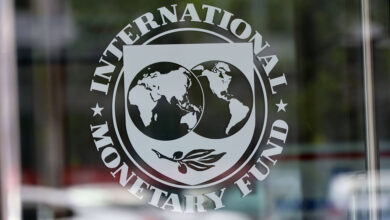
IMF Board Grants New Extended Credit Facility (ECF) Arrangement For Zambia
The International Monetary Fund (IMF) On Wednesday granted a loan of $1.3bn (£1.1bn) loan to Zambia under a 38-month loan program,…
Read More » -
Zambia

Zambian Gov’t Kicks Off Polio Vaccination Campaign Targeting 3.8 Million Children
The Zambian government on Wednesday kicked off an oral polio vaccination campaign aimed at vaccinating about 3.8 million children aged…
Read More » -
Zambia
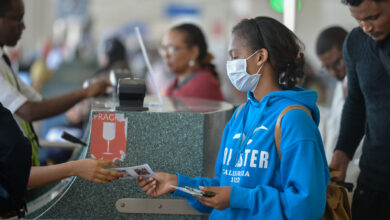
Zambian Government Develops Blueprint To Accelerate Fight Against COVID-19 Pandemic
The Zambian government has developed a COVID-19 resurgence plan that is aimed at accelerating the fight against the pandemic, reported…
Read More » -
Zambia

Zambian Government Lifts All COVID-19 Restrictions As Case Numbers Decline
The Zambian government on Friday lifted all COVID-19 restrictions as the number of fresh cases continues to decline, reported CGTN…
Read More » -
Zambia
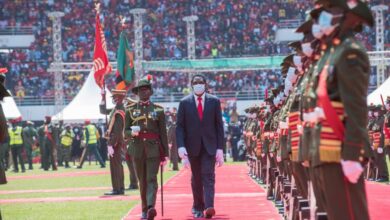
Zambia’s New President Hakainde Hichilema Sacks Military And Police Chiefs
Zambia’s newly elected President Hakainde Hichilema appointed new military chiefs on Sunday, replacing almost all police commissioners in a major…
Read More » -
Zambia
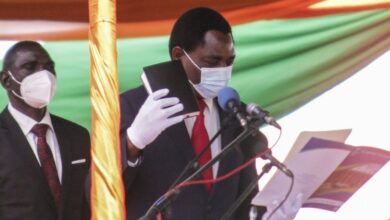
New Zambian President Hakainde Hichilema Gets Sworn In After Defeating Edgar Lungu
New Zambian President and longtime opposition leader Hakainde Hichilema got sworn into power on Tuesday in a ceremony attended by…
Read More » -
Zambia
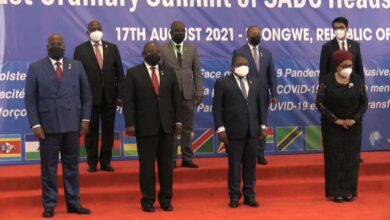
SADC Summit: Member Countries Praise Zambia For Peaceful Transfer Of Power
The Southern African Development Community (SADC) on Tuesday praised the Zambian government Tuesday for having a peaceful transition of power,…
Read More » -
Zambia
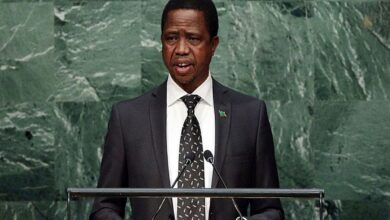
Zambian President Edgar Lungu Meets Newly Elected President Hakainde Hichilema
Zambian President Edgar Lungu on Monday met with the country’s newly elected President Hakainde Hichilema, reported CGTN Africa. Hichilema was…
Read More » -
Zambia
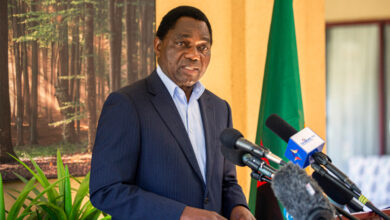
Zambian Electoral Commission Declares Hakainde Hichilema As Election Winner
Zambian electoral commission on Monday declared business tycoon and opposition leader Hakainde Hichilema as the winner of the presidential election…
Read More » -
Zambia
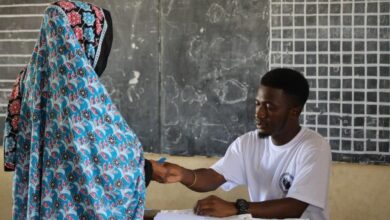
Zambians Begin Voting In Tense Presidential & Parliamentary Polls Amid COVID-19 Pandemic
Zambians began voting on Thursday to choose the country’s new president after a tense campaign dominated by economic woes and…
Read More » -
Zambia

Zambian President Orders Deployment Of Military To Curb Electoral Violence
Zambian President Edgar Lungu on Sunday ordered for the deployment of the military to join the police in maintaining law…
Read More » -
Zambia

Zambian Authorities Close Nightclubs, Casinos Over Flouting Of COVID-19 Guidelines
Zambian authorities on Monday announced the shutdown of nightclubs, casinos, and other places where alcohol is served following continued flouting…
Read More » -
Zambia
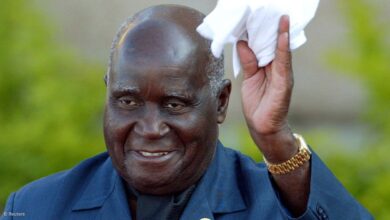
Zambian Government Announces Death Of Founding President Kenneth Kaunda
The Zambian government has announced Kenneth Kaunda, the country’s founding president, died at the age of 97 on Thursday, days…
Read More » -
Zambia

Zambian Government Warns Of A Third COVID-19 Wave As Cases Rise Rapidly
The Zambian government on Friday warned the country is witnessing a rise in daily COVID-19 cases in recent days and…
Read More » -
Zambia

Zambia: Electoral Body Begins Electronic Inspection Of Registered Voters Ahead Of Election
Zambia’s electoral body began the electronic inspection of the provisional voters’ register on Friday ahead of the general elections scheduled…
Read More » -
Zambia

Zambia Receives 8.7 Million Doses Of COVID-19 Vaccines From The African Union
Zambia has received 8.7 million doses of COVID-19 vaccines from the African Union under the COVID-19 African Vaccine Acquisition Task…
Read More » -
Zambia

Zambian President Announces Delay In Re-opening Of Schools Amid Rising Coronavirus Cases
The Zambian government on Friday announced it has decided to postpone the re-opening of schools in the country amid increasing…
Read More » -
Zambia

Zambia To Reopen All Learning Institutions After A Drop In Covid-19 Cases
Zambia government on Friday announced it has decided to reopen all learning institutions in the country as there has been…
Read More » -
Zambia

Zambia: President Edgar Lungu Pardons Gay Couple And Over 2,900 Other Prisoners
Zambia’s President Edgar Lungu on Monday pardoned two men who were sentenced to 15 years in prison in November over…
Read More » -
Southern Africa
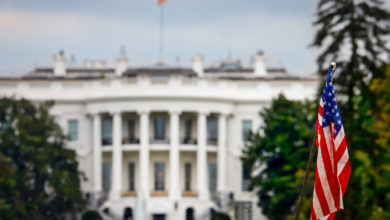
U.S. Government Recalls Ambassador To Zambia Amid Diplomatic Row Over Gay Rights
The United States government has called back its ambassador to Zambia amid a diplomatic row with authorities after he criticized…
Read More » -
Southern Africa

Outgoing British Envoy Urges Zambian Govt To Fight Corruption To Get International Aid
Fergus Cochrane Dyet, the outgoing British High Commissioner to Zambia, on Tuesday, said the Zambian government should prove that it…
Read More »

